Ten
THE NEXT 50 YEARS
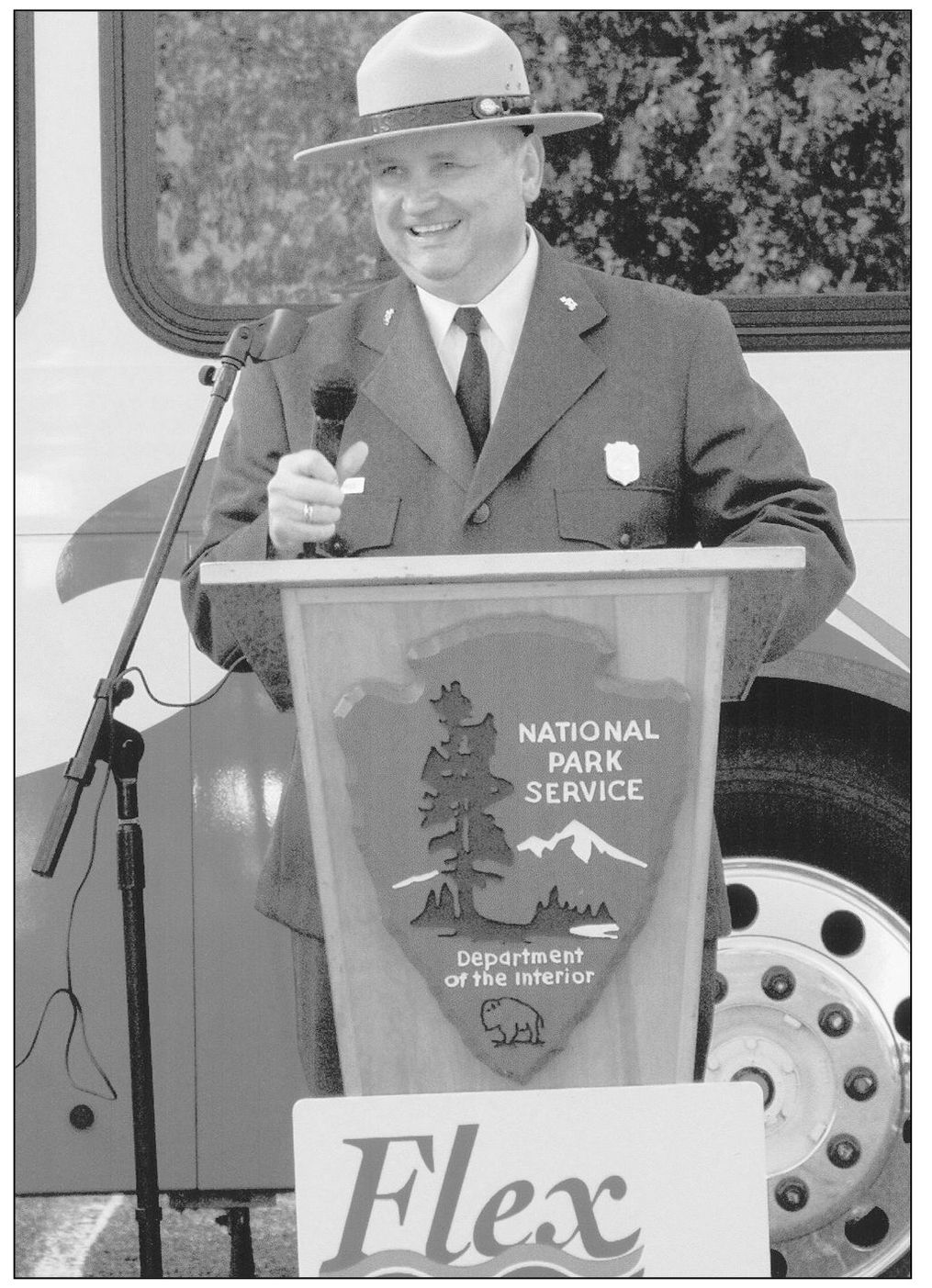
George Price Jr., superintendent of CCNS since 2005, has said, “People often tell me I have the best job in the world! I have to agree with them. Working for the National Park Service has been an amazing experience. Our national parks have been called ‘America’s best idea.’” Price looks ahead to a future of regional and national collaboration to protect both the natural wonders and the special cultural features of CCNS.
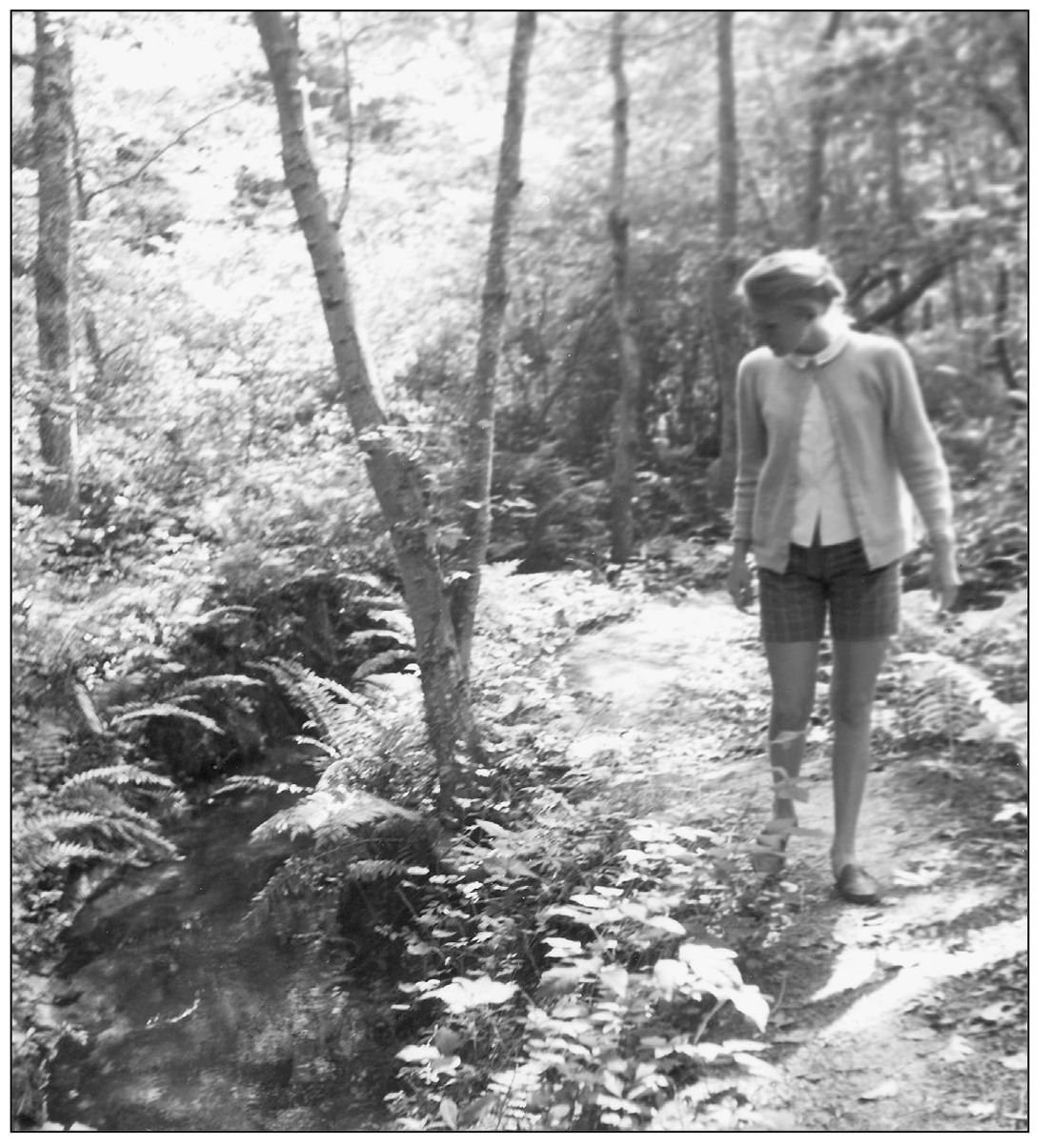
The next 50 years of CCNS will be exhilarating and demanding. There are large-scale restoration projects, like the restoration of the Herring River estuary, seen here. There are plans to furnish the Old Harbor Life Saving Station, for new exhibits, and the “greening” of national seashore operations. Overdevelopment will continue to be a challenge. “My number one concern is this issue of large houses. It could have a dramatic, cumulative effect,” says Superintendent Price.
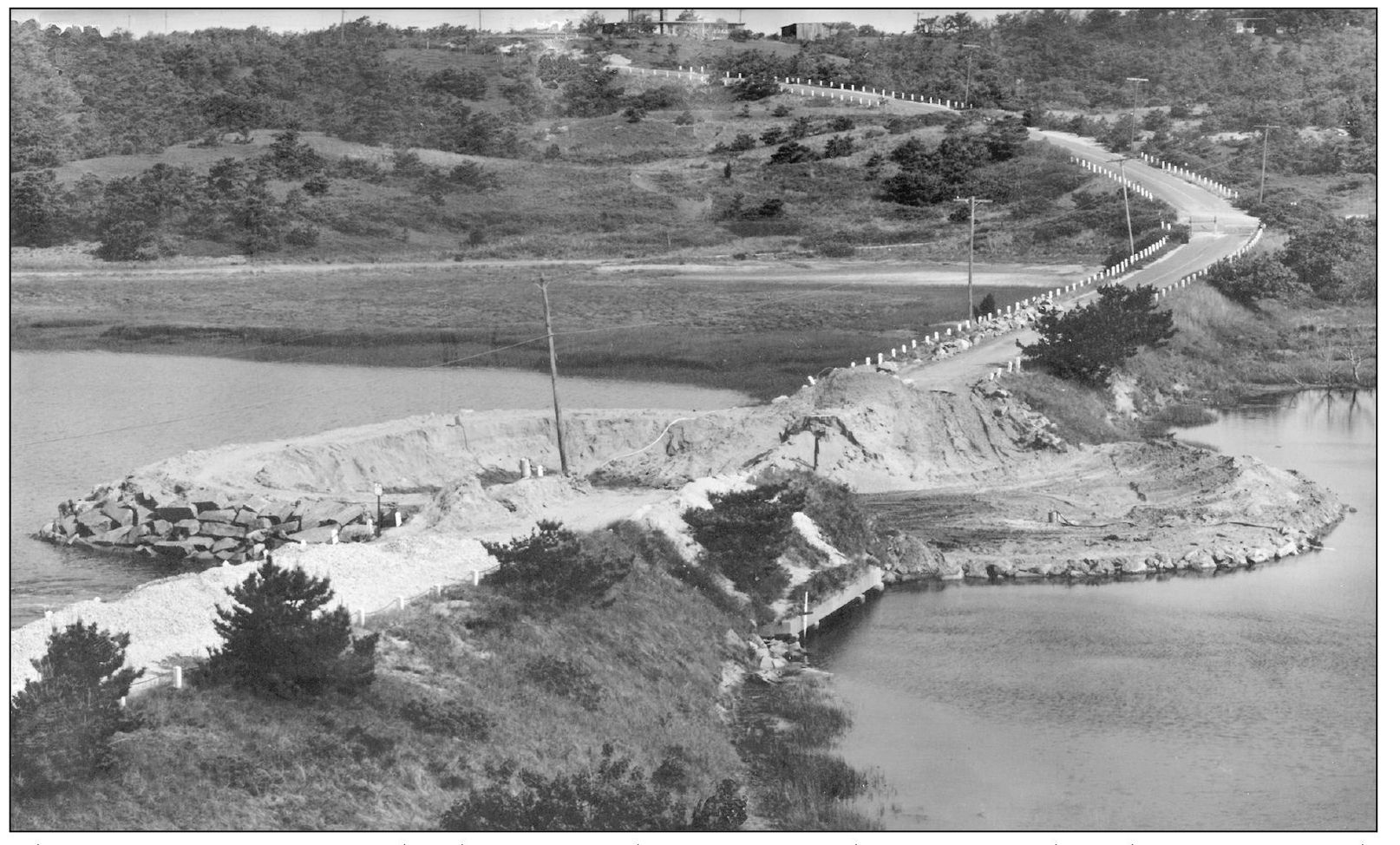
The Herring River estuary has been seriously compromised since 1908 when the 1,200-acre salt marsh was reduced to 7 acres by a dike. During the past 100 years, upland vegetation invaded the flood plain, lack of flushing contributed to low levels of oxygen, and acidic conditions supported mosquitoes and high levels of bacteria. Fish kills and routine closures of adjacent shellfish beds eventually received attention.
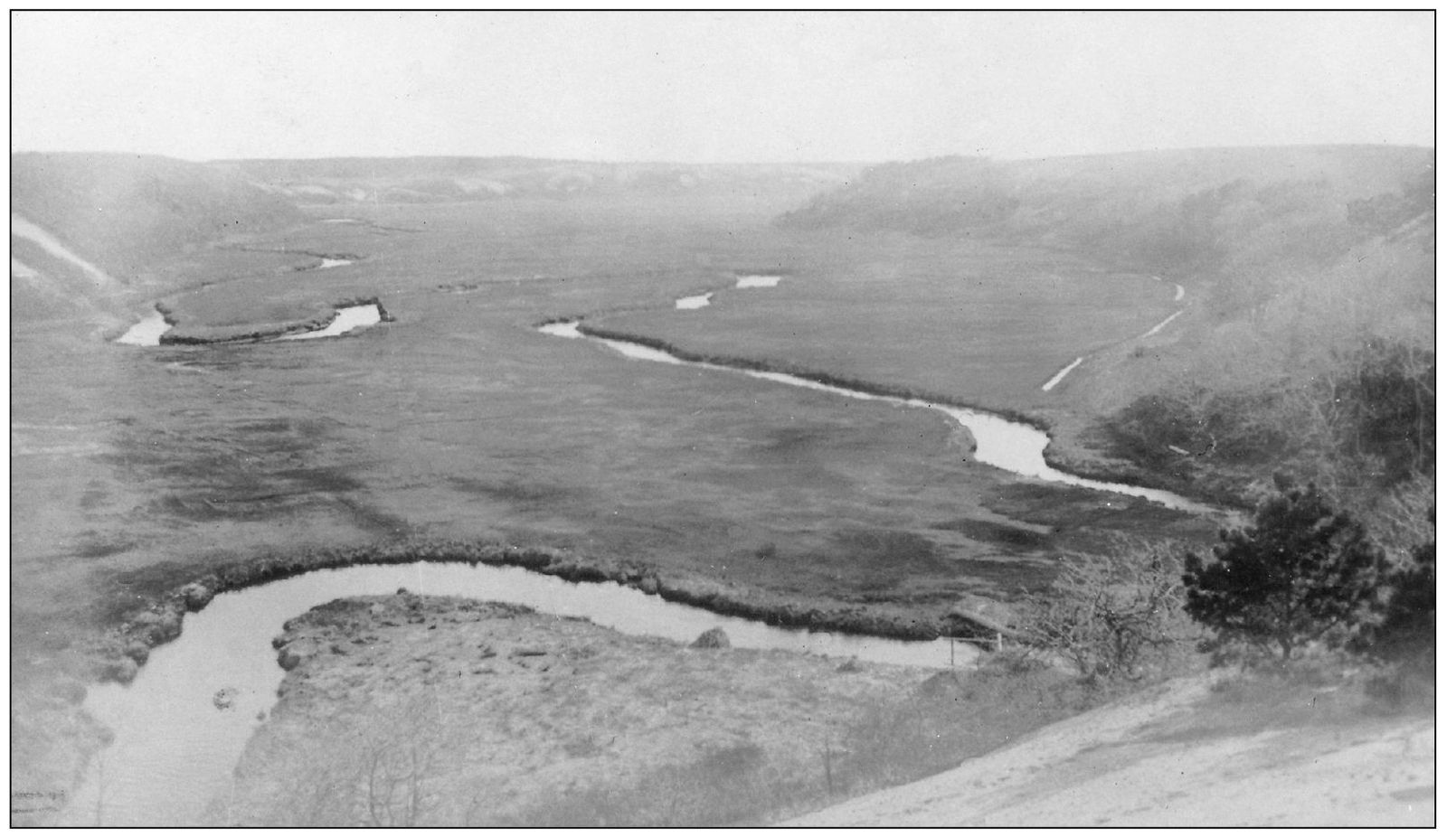
The Herring River Restoration Project is the largest and perhaps most ecologically complex estuary restoration in the northeast. So far, over 17 private, local, state, and federal partners have been involved. Social concerns remain, however, including sediment transport to downstream shellfish aquaculture grants, insect production, the flooding of low-lying roads, and the private wells and grounds within the coastal flood plain. The aerial photograph shows the area before the dike was built.
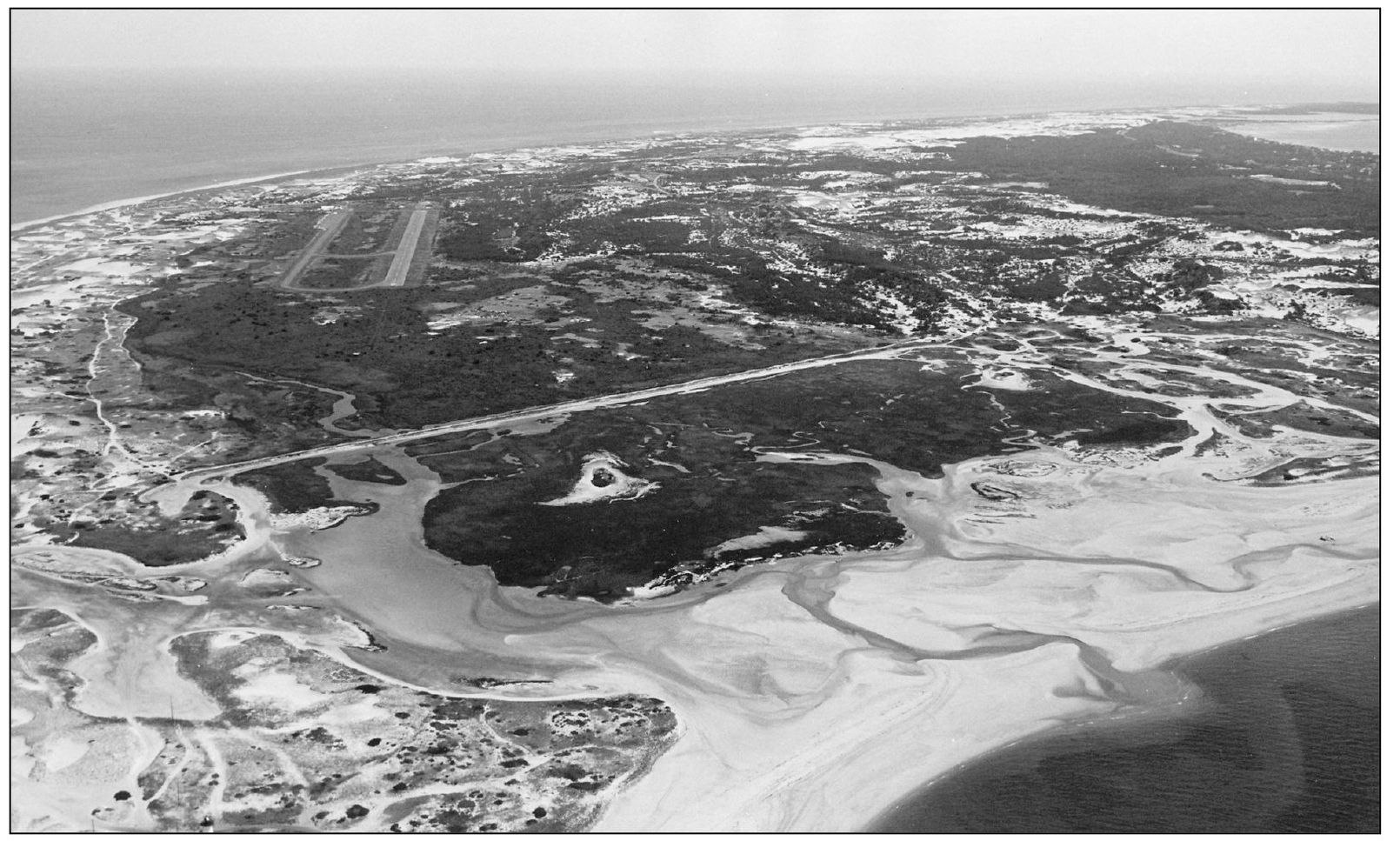
Similar to the Herring River estuary, Hatches Harbor (above) in Provincetown was diked in 1930 in an unsuccessful attempt to eliminate mosquitoes. The Provincetown airport was built on the floodplain shortly thereafter. In 1998, saltwater flow was restored, and since then shellfish have recolonized and estuary fish are again foraging in tidal creeks. The project has also provided the airport with additional protection from storm surges.
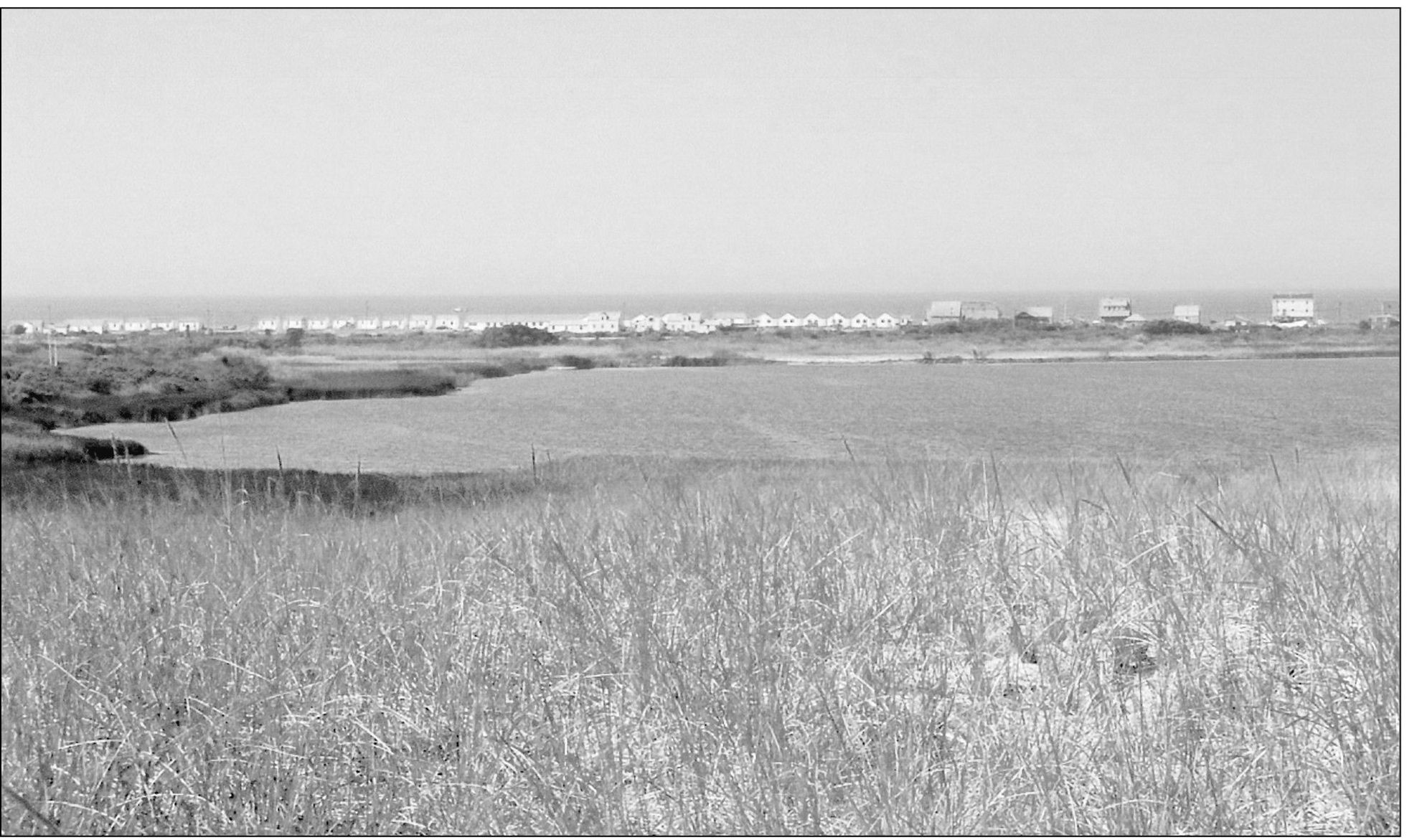
East Harbor, formerly known as Pilgrim Lake, offers a serene welcome when Provincetown is approached by land. It, along with Moon Pond and Salt Meadow, is part of 720-acre East Harbor. All of this has been artificially isolated from the sea since 1868, when the original inlet was filled. Oxygen depletion and a fish kill involving about 40,000 alewives in September 2001 were alarming. Officials from Truro, Cape Cod National Seashore, and the state consulted on possible measures to improve water quality. Between 2004 and 2005, with the opening of the existing culvert to tidal flow, water clarity in East Harbor improved dramatically. What was once a very turbid area with almost no visibility now has a sandy bottom that can be seen through clear water across the entire lagoon. East Harbor has reverted to a rich saltwater habitat with sticklebacks, silversides, mummichogs, pipefish, winter flounder, blue mussels, hard clams, soft-shelled clams, oysters, shrimp, horseshoe crabs, sea anemones, and sea squirts. Despite the significant gains in species diversity, water quality, and overall ecological health of East Harbor, impairments still remain. More complete restoration could expand salt marsh plant communities.
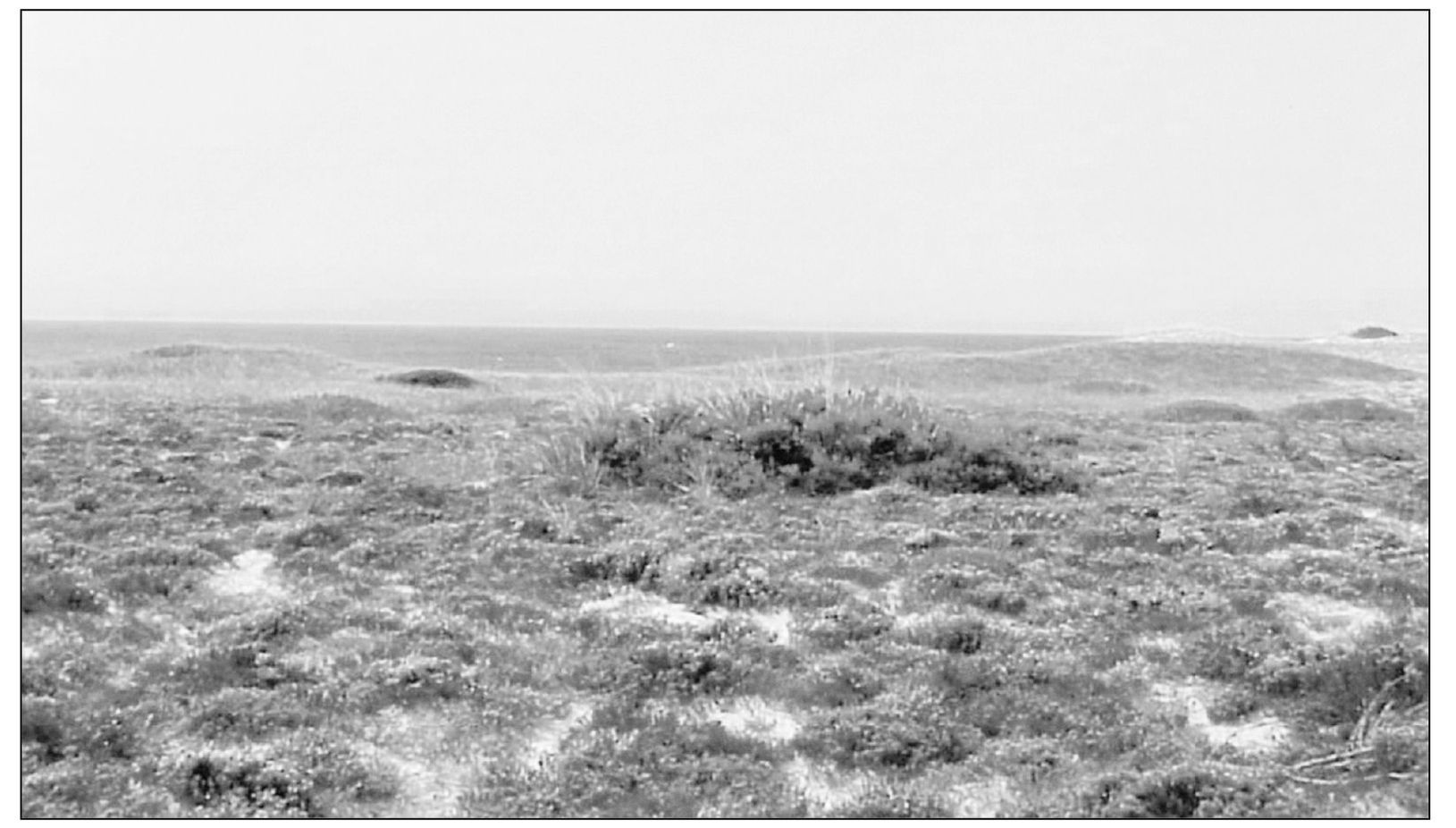
Heathlands have been part of the Cape Cod landscape since the last ice age. The most extensive coastal heathlands in the United States today occur within Cape Cod National Seashore and the islands. They contain a diversity of species not found anywhere else in southern New England. Up to 500–700 acres of heathland around the Marconi area (above) and acreage on Fort Hill will be restored, bringing back much lost habitat.
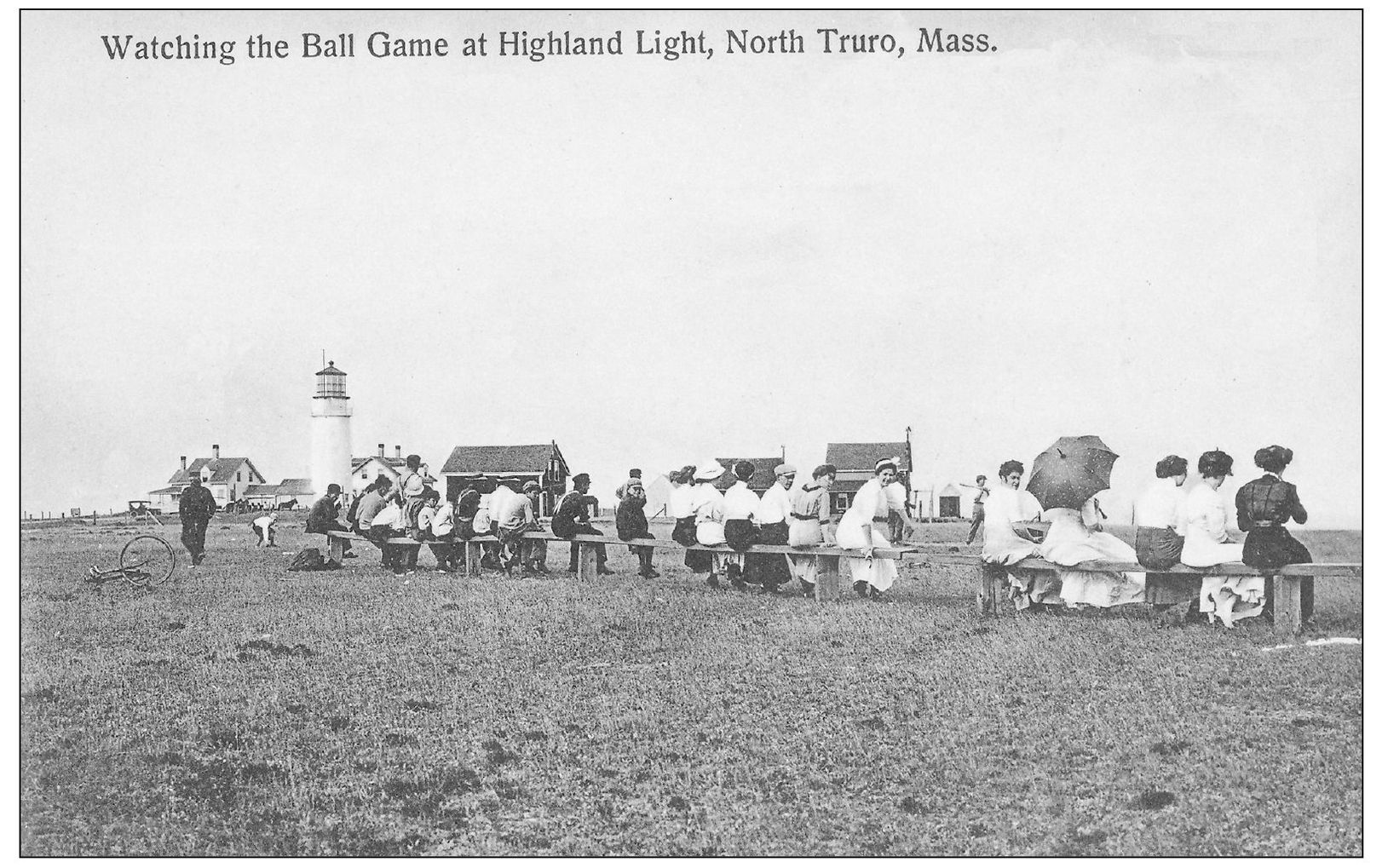
CCNS continues to struggle with the gap between its building guidelines and zoning bylaws of individual towns. Truro’s zoning has yet to be reconciled with the seashore guidelines. Thus, a permit was recently issued for the demolition and “reconstruction” of a Truro house within CCNS boundaries. The new house is three-and-a-half times larger than the original 700-square foot house. This postcard shows a simpler era in Truro.
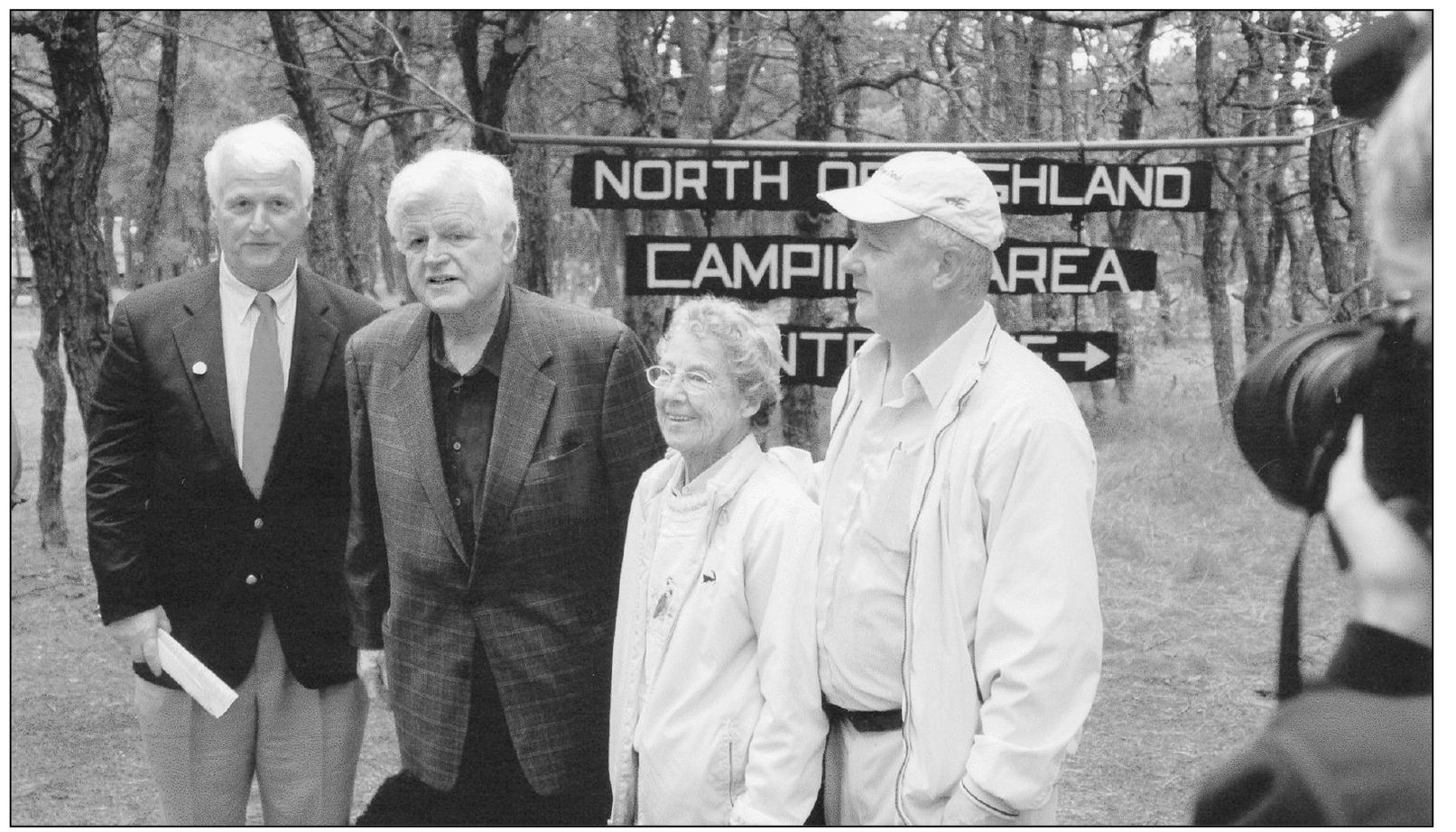
In March 2009, some $1.75 million in federal money completed funding to preserve the North of Highlands Campground in Truro. Congressman Bill Delahunt and Sen. Ted Kennedy had acquired the first $2 million in 2006. Surrounded by national seashore lands, the 57-acre property includes 20 acres of undisturbed woodland and wetland and the 37-acre wooded campground. Protection will allow future generations to enjoy rustic camping within CCNS. Pictured above are Congressman Bill Delahunt, Sen. Ted Kennedy, and owners Evelyn and Stephen Currier at the announcement of the first funds to preserve North of Highlands Campground in October 2006. In the photograph below are Supt. George Price in uniform and Senator Kennedy, seated. No sooner had one Truro campground been saved from development, when another one was put up for sale.
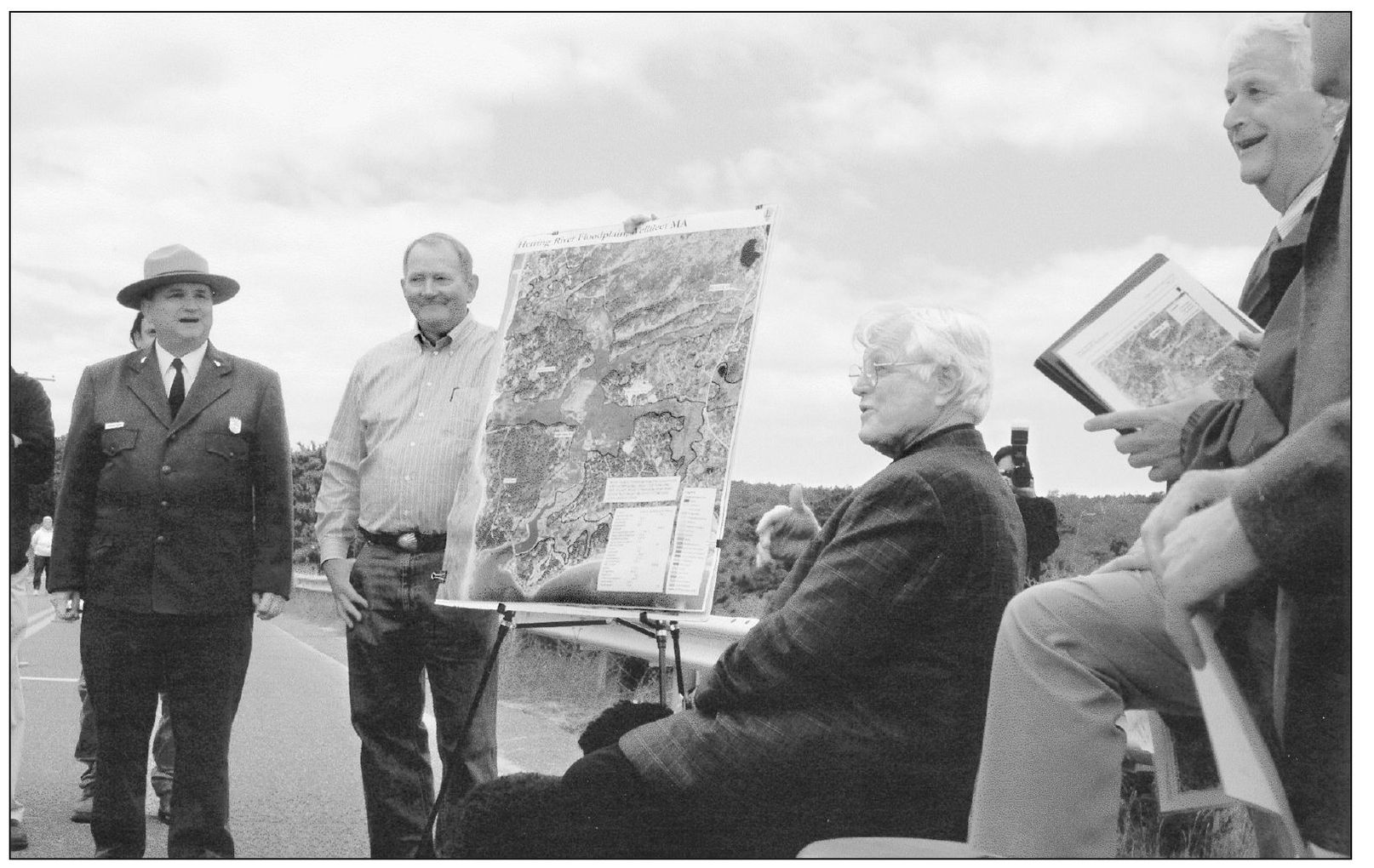
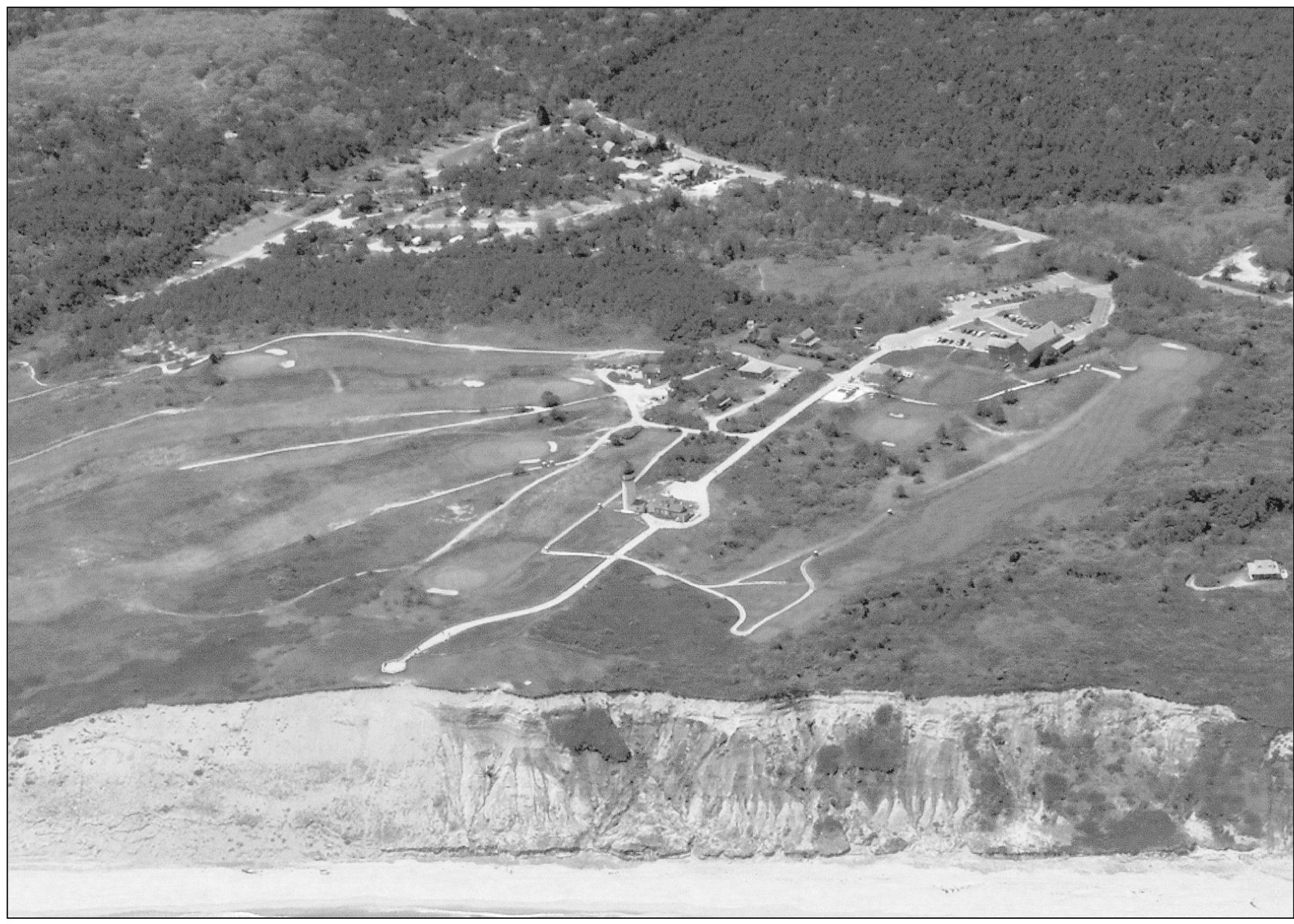
On November 12, 2009, the Provincetown Banner announced what will be a major new development challenge within the national seashore: “Trees, grassland and empty hills make up the campground that has operated for more than 50 years next to historic Highland Light in North Truro. But will subdivisions and ‘trophy’ homes crop up there in the future? Horton’s Camping Resort, at 71 South Highland Road, is on the market, raising concern on the part of at least one abutter, the national seashore, that it could be targeted for development. The 39-acre property lies within park boundaries, bordered on one side by Highland Light, the Highland House Museum and Highland Links—all owned by the seashore—and on the other by the seashore’s Highlands Center.” Supt. George Price Jr. said, “We’ve seen a number of campgrounds, low-end cottages, or motels go by the wayside. So maintaining an opportunity for camping out on the Cape is going to be critical.” This aerial photograph shows the entire area, with Highland Light at center and Horton Campground at top left.
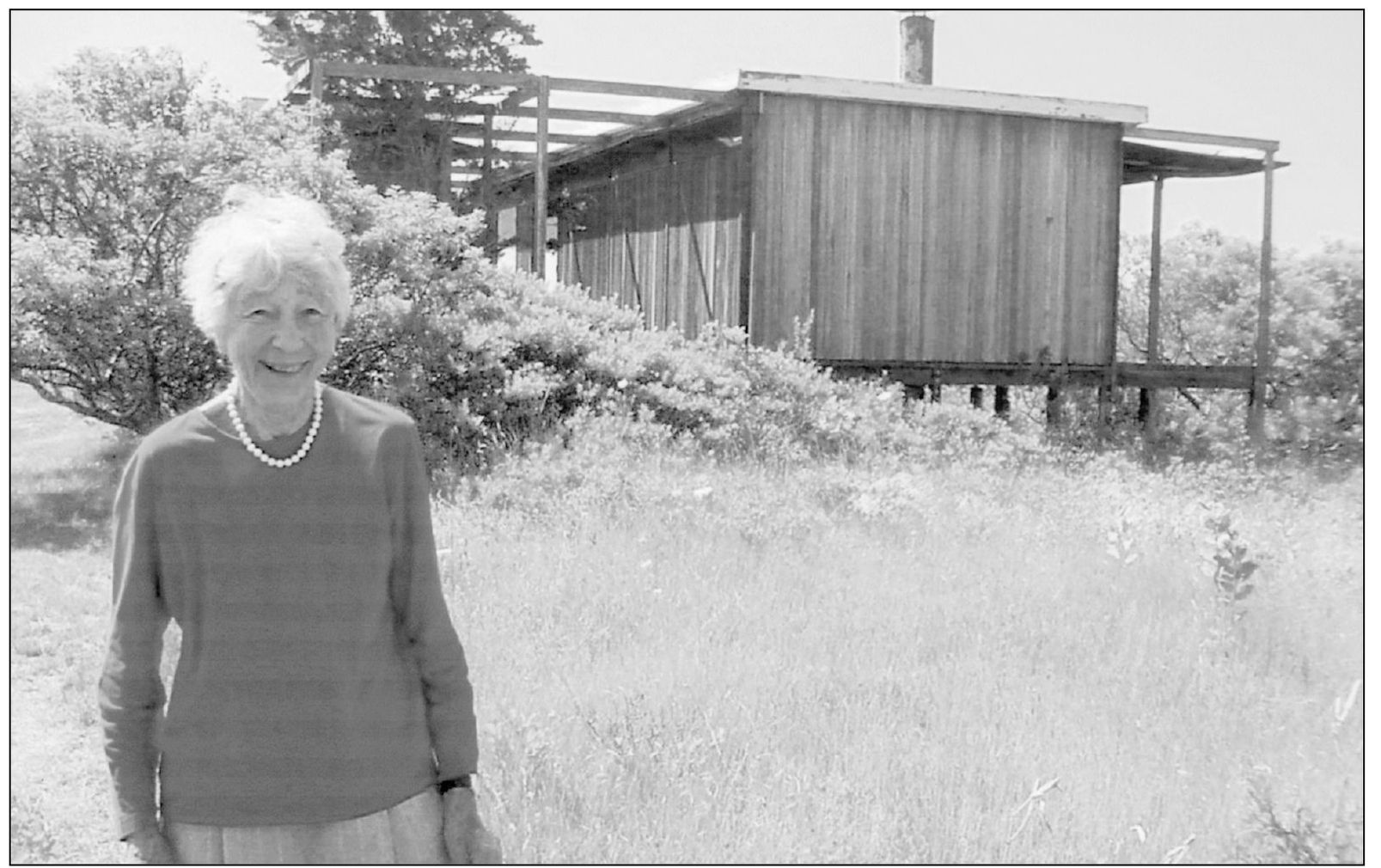
Park historian Bill Burke emphasizes to the need to preserve the Cape’s recent cultural past: “Since World War II, modern architects like Breuer, Chermayeff, and Hammarstrom had been quietly inserting into the scented pine forests of Wellfleet architectural gems.” One of them, the Hatch House (shown above with Ruth Hatch in 2003), was designed by John Hughes Hall.

Several remarkable homes were designed for the ponds in Wellfleet. Bill Burke has written, “There are over 50 significant modern houses from this lineage on the Outer Cape, and the seashore and local preservation groups are spearheading an effort to preserve some of them . . . The 1953 Weidlinger House [above] was designed by Paul Weidlinger on Higgins Pond. It illustrates an all-embracing attitude toward modern design, taking into account the topography and environment and treading lightly on the land.”
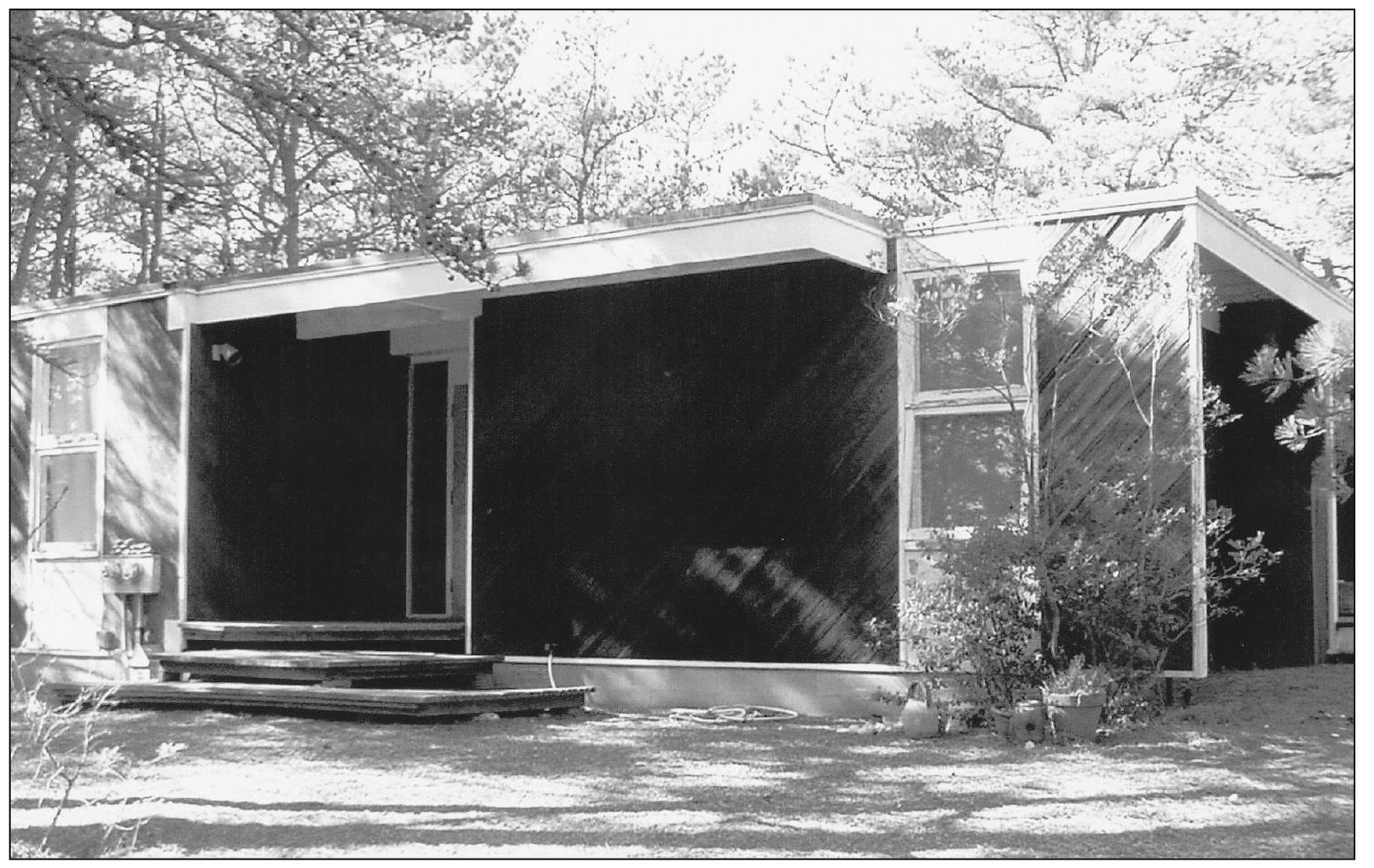
Park historian Bill Burke remarks, “A strong continuum between the past and the present makes the past seem more relevant to our own lives. [It] is as much about what’s saved as it is about how we value the built environment in our own backyards.” The Kuhn House was built in Wellfleet in 1960. Designers Nathaniel Saltonstall and Peter Morton were colleagues of Breuer and Gropius.
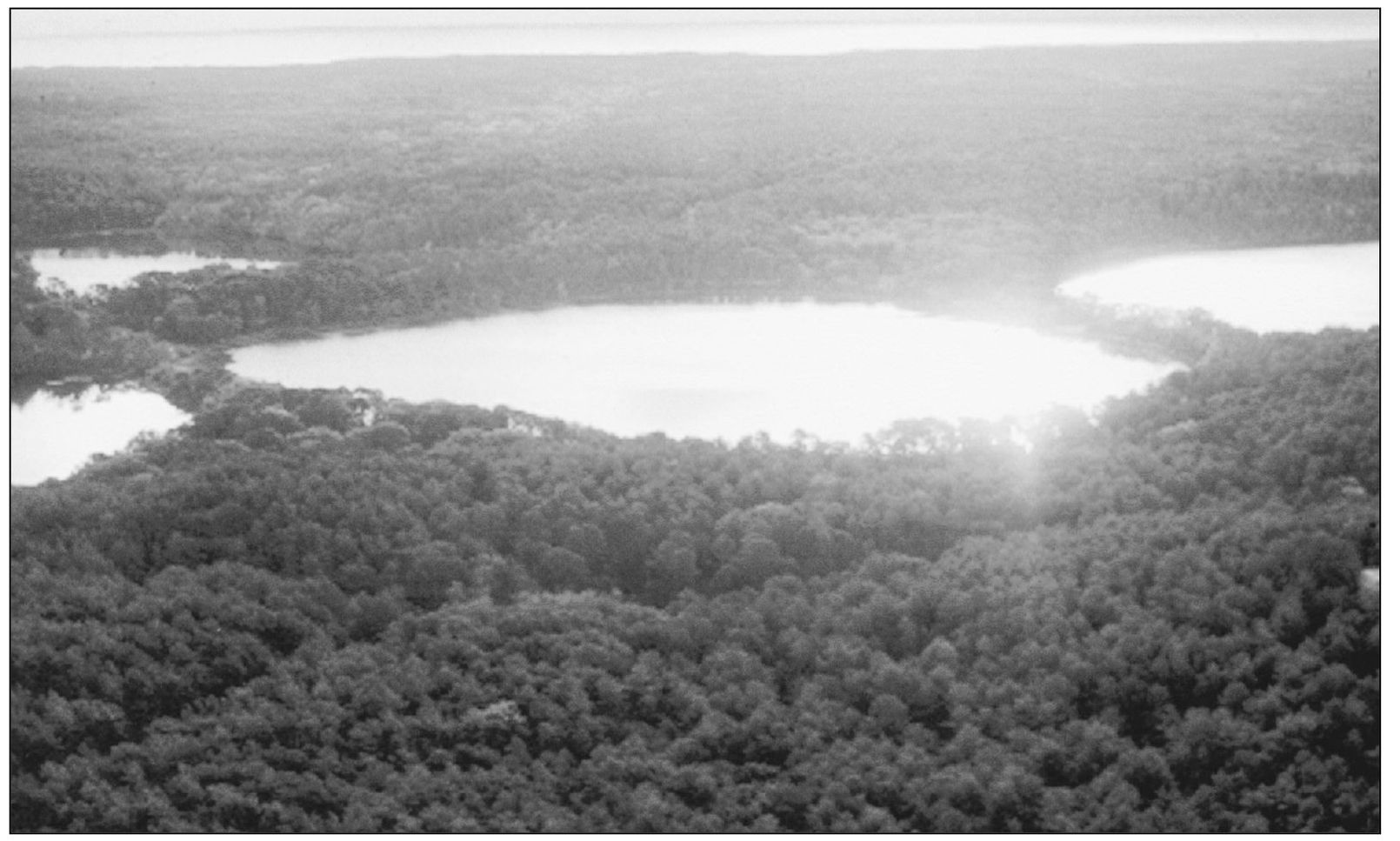
This view of Great Pond, Wellfleet, recalls the words of Supt. George Price’s Centennial Strategy report of 2007: “Cape Cod is . . . a place to enjoy the beauties of land, sea, and sky, to marvel at the power of a storm-driven ocean, and to reenergize the human spirit. Cape Cod National Seashore was set aside in 1961 to help preserve the special qualities that give this slender peninsula in the Atlantic Ocean its unique place in the American psyche.”
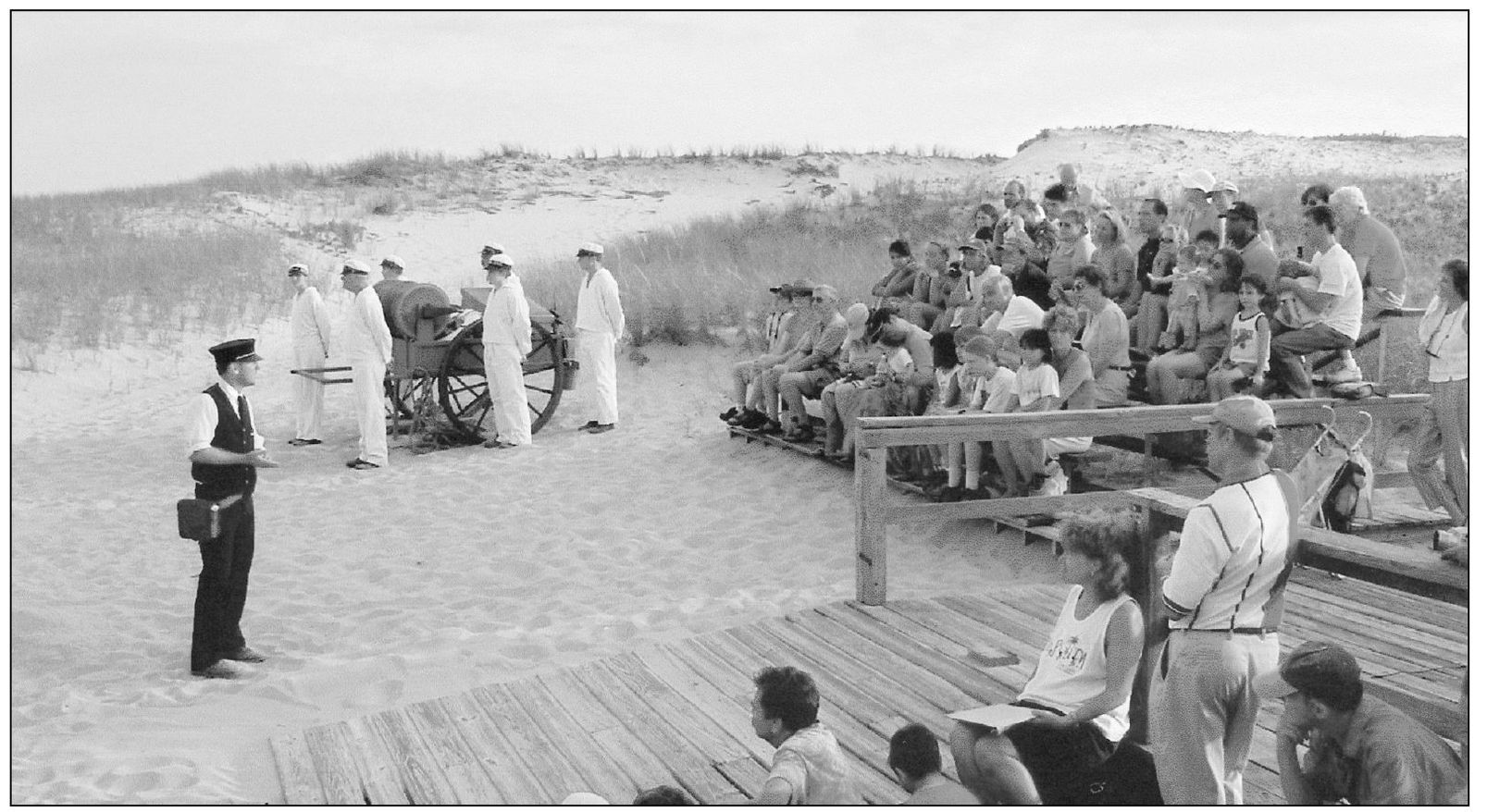
An informal survey of present and past CCNS employees turns up a variety of concerns for the next 50 years: Mike Whately, and John Portnoy consider global warming and the rising sea level critical. Jack Farley and David Spang emphasize the need for zoning and the preservation of open space. Bill Burke sees the need for more satellite parking and shuttles, for the restoration of large ecosystems like Herring River, for the care of historic structures, the need to make CCNS ecologically sustainable, and to keep it affordable for all to visit. Both Jenna Sammartino and David Spang look to new, interactive ways to engage the public. This means keeping popular demonstrations of historical lifesaving apparatus and adding programs like Jenna Sammartino’s innovative beach yoga class.

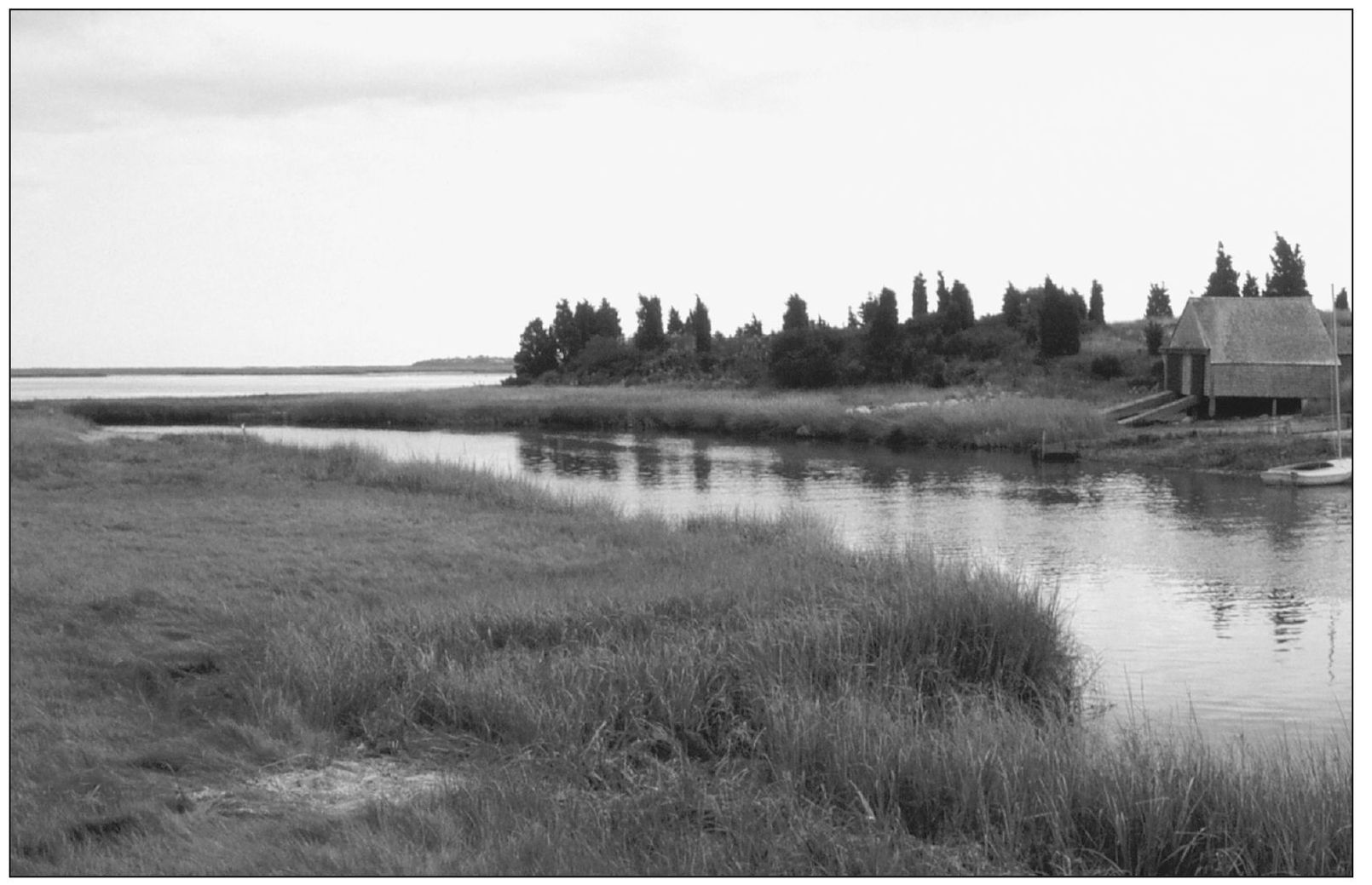
These words of Henry David Thoreau are every bit as true now as they were when he wrote them in 1865: “Thus Cape Cod is anchored to the heavens, as it were, by a myriad little cables of beach-grass, and, if they should fail, would become a total wreck, and erelong go to the bottom . . . We often love to think now of the life of men on beaches—at least in midsummer, when the weather is serene; their sunny lives on the sand, amid the beach-grass and the bayberries . . . their wealth a jag of driftwood or a few beach-plums, and their music the surf and the peep of the beach-bird.”
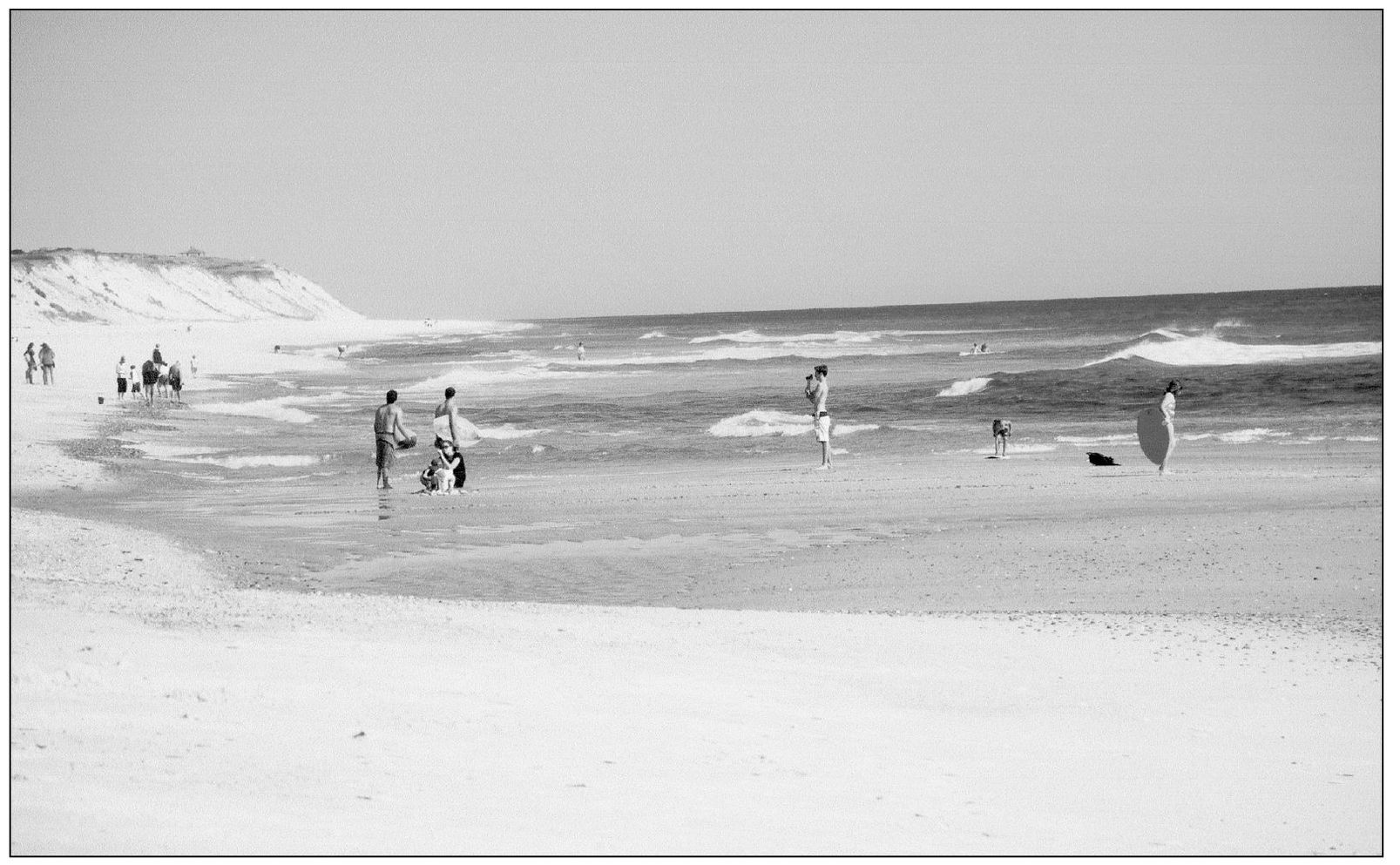
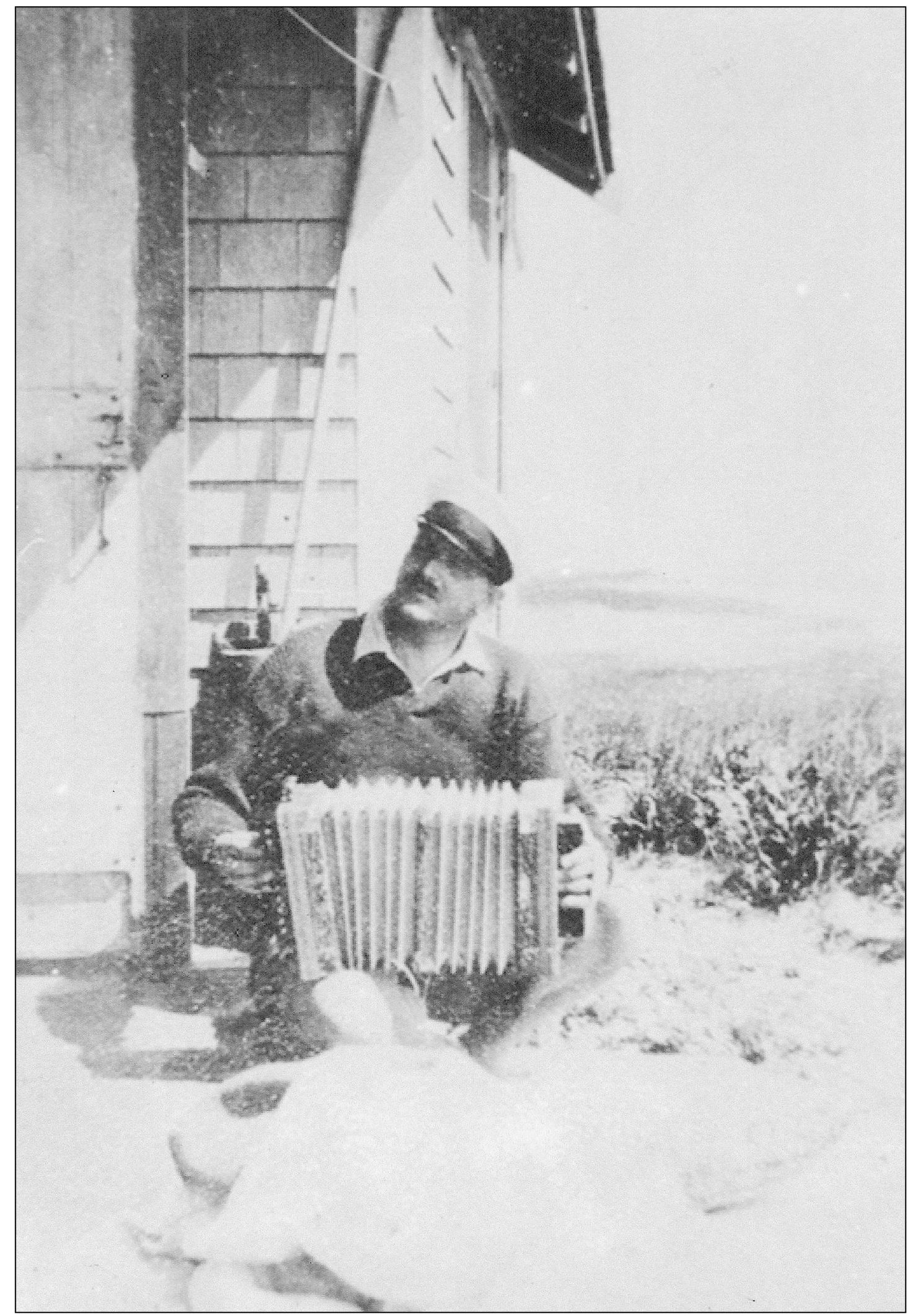
This rare photograph of Henry Beston playing his accordion in the snow contrasts with his deeply felt words: “A human life, so often likened to a spectacle upon a stage, is more justly a ritual. The ancient values of dignity, beauty and poetry which sustain it are of Nature’s inspiration; they are born of the mystery and beauty of the world. Do no dishonor to the earth lest you dishonor the spirit of man. Hold your hands out over the earth as over a flame. To all who love her . . . she gives of her strength, sustaining them with her own measureless tremor of dark life.”
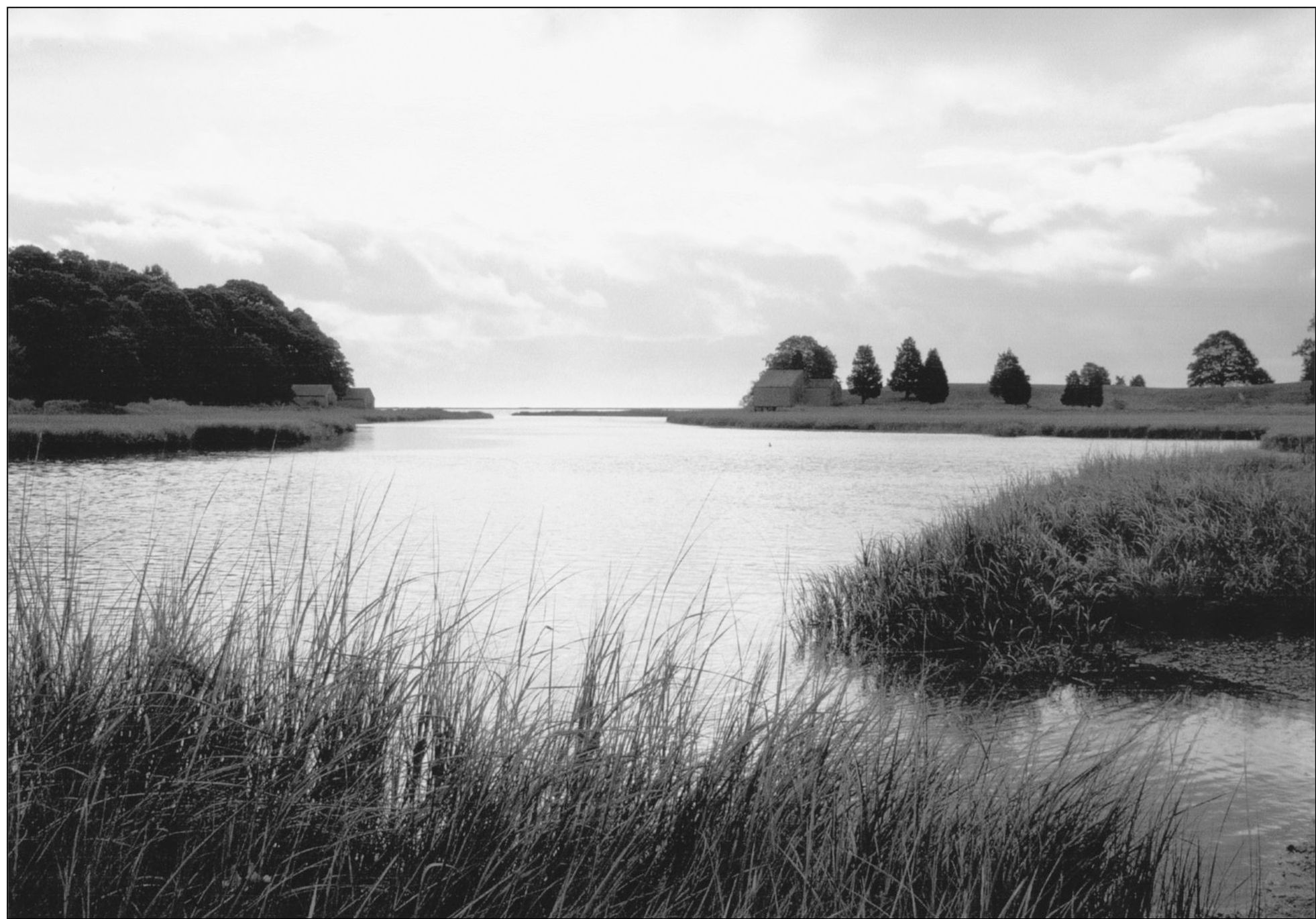
Looking across Salt Pond in Eastham, to Nauset Marsh, one can see beyond to the Atlantic Ocean, where Henry Beston had his Outermost House. There he wrote the following: “Touch the earth, love the earth, honor the earth, her plains, her valleys, her hills and her seas; rest your spirit in her solitary places. For the gifts of life are the earth’s and they are given to all, and they are the songs of birds at daybreak, Orion and the Bear, and dawn seen over ocean from the beach.”